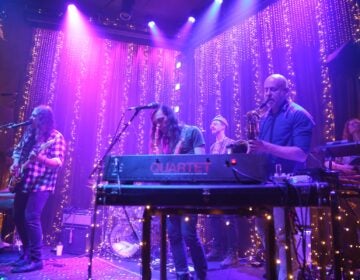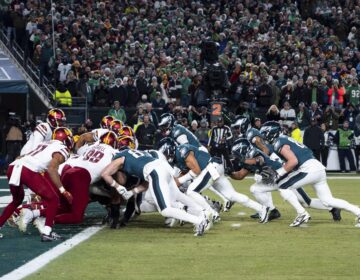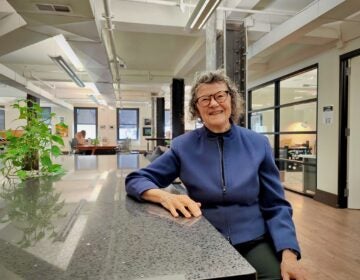New exhibit explores redlining with immersive maps, art and film
Redlining has shaped Philadelphia dramatically, affecting not only the city’s demographics and widespread inequality, but also its psychology.
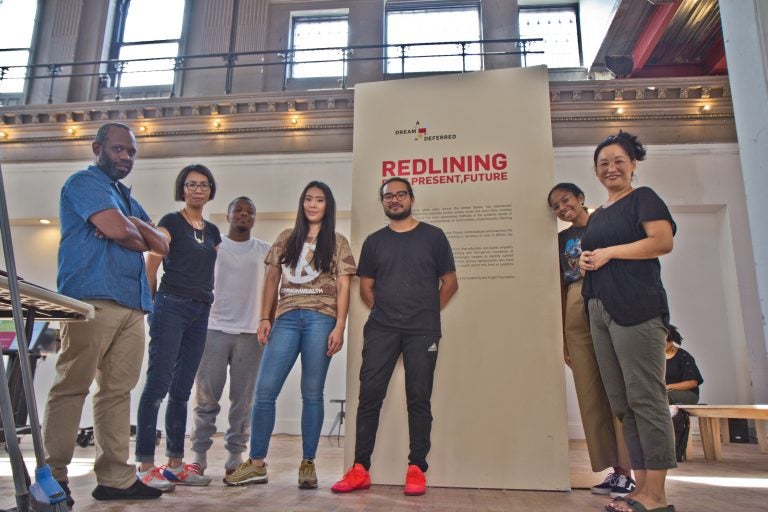
The Little Giant Creative Team during the setup of the Dream Deferred exhibit at 6th and Spring Garden Streets in Philadelphia. (Kimberly Paynter/WHYY)
This story originally appeared on PlanPhilly.
—
The logo for “A Dream Deferred,” a new exhibit that opened Friday inside the landmark Northern Savings Fund bank building at 600 Spring Garden at first appears harmless and inviting. It’s a simple arrangement of seven rectangles, each with bright, Crayola-like colors, resembling building blocks from a children’s classroom. But the exhibit quickly reveals that these rectangles are more insidious: they are the literal colors found on maps that we now know as redlining diagrams, intentional plans by financial institutions to segregate certain racial and class groups through discriminatory homeownership and loan policies.
Redlining has shaped Philadelphia dramatically, affecting not only the city’s demographics and widespread inequality, but also its psychology. This complex legacy of tangible and intangible truths is the focus of the interactive arts and historical exhibit that’s the brainchild of creative agency Little Giant Creative.
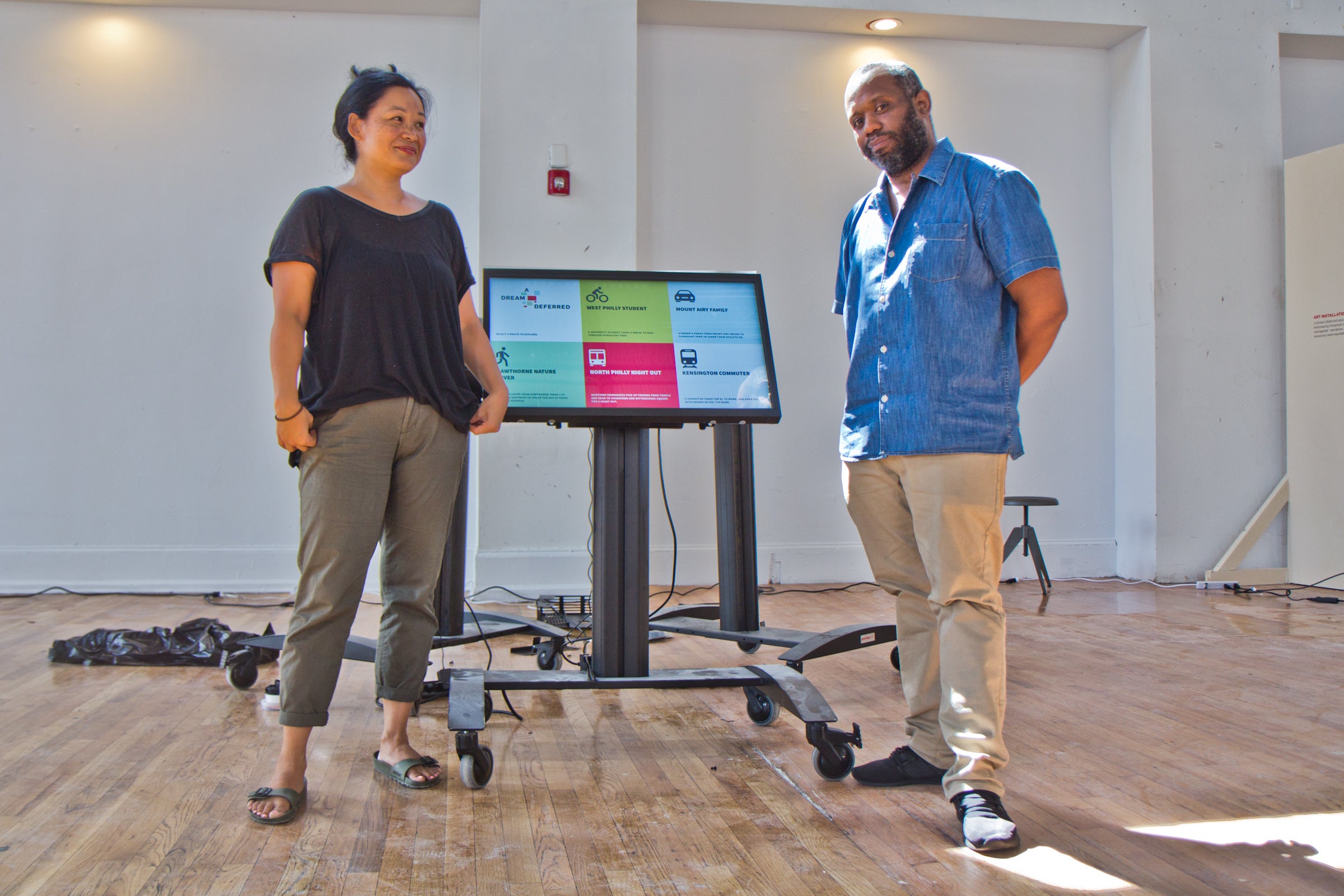
“Ghettos were manufactured; they didn’t just happen,” Tayyib Smith, co-founder of Little Giant Creative, told PlanPhilly.
“A Dream Deferred,” a namesake borrowed from the famous Langston Hughes poem, will be open to the public Wednesday through Sunday in a first-floor gallery in the former bank-turned-nightclub building originally designed by Frank Furness and George Hewitt. The owner, Arts + Craft Holdings, rented the space to Little Giant at a reduced rate.
Featuring several distinct multimedia elements, the exhibit is designed to change the way Philadelphians interact with the city that surrounds them.
“A lot of people walk around with fractured or broken history. To a certain extent, this [exhibit] is about repairing history and encouraging people to go out and learn more,” said Meegan Denenberg, co-founder of Little Giant Creative, who managed the exhibit along with longtime collaborator Annie Chiu-McCabe.
The centerpiece of the exhibit is a tripartite touchscreen GIS mapping of Philadelphia that allows viewers to see discriminatory public policies grafted onto the city’s familiar map. An original creation of local geospatial design company Azavea and IB5k, based in New York, the installation connects the dots from restrictive covenants passed during Reconstruction following the Civil War to redlining and other discriminatory policies to create a kind of virtual atlas of inequality.
“There were so many policies that were interwoven together in a manipulative way that made sure that people of color didn’t have many resources,” said Denenberg.
Historians and artists both helped inform multiple elements of the ambitious exhibit, which took one year to realize. Another one of the fruits of this collaboration is a 20-minute documentary exploring the effects of redlining on specific neighborhoods.
The film is screened on a loop at the exhibit, not far from a visual interpretation by artist Shawn Theodore.
Theodore imagines what Philadelphia and the country might have looked like had redlining never existed. Exhibition walls display additional nuggets of history — information that can be learned more about in an intimate reading room. Here, exhibit-goers can find books like Richard Rothstein’s 2016, “The Color of Law: A Forgotten History of How our Government Segregated America,” one of the texts that informed “A Dream Deferred.”
Finally, people are invited to enter a reflection booth to video record their raw impressions and emotions of the show, positive or negative. Where these reflections will go is still unknown but the Little Giant team said that its this kind of public feedback they are seeking throughout the exhibition. At the end of the exhibit, surveys ask visitors to rate the enjoyment of their experience along with how it’s changed their mindset; Little Giant wants to know if their audience is more likely to join a community group, or volunteer at a nonprofit, after taking in “A Dream Deferred.”
Although it’s a curated progression of elements, Denenberg wants people to explore the space at their own pace without the imposition of a specific structure. “I do feel that people who are immersed in poverty often can’t get out of it,” she said. “It’s this feeling of no matter where you are, you’re entrenched in that experience … we want people to be able to move through here with a lot of facilities. We want you to spend as much time as they want — even hours — in here.”
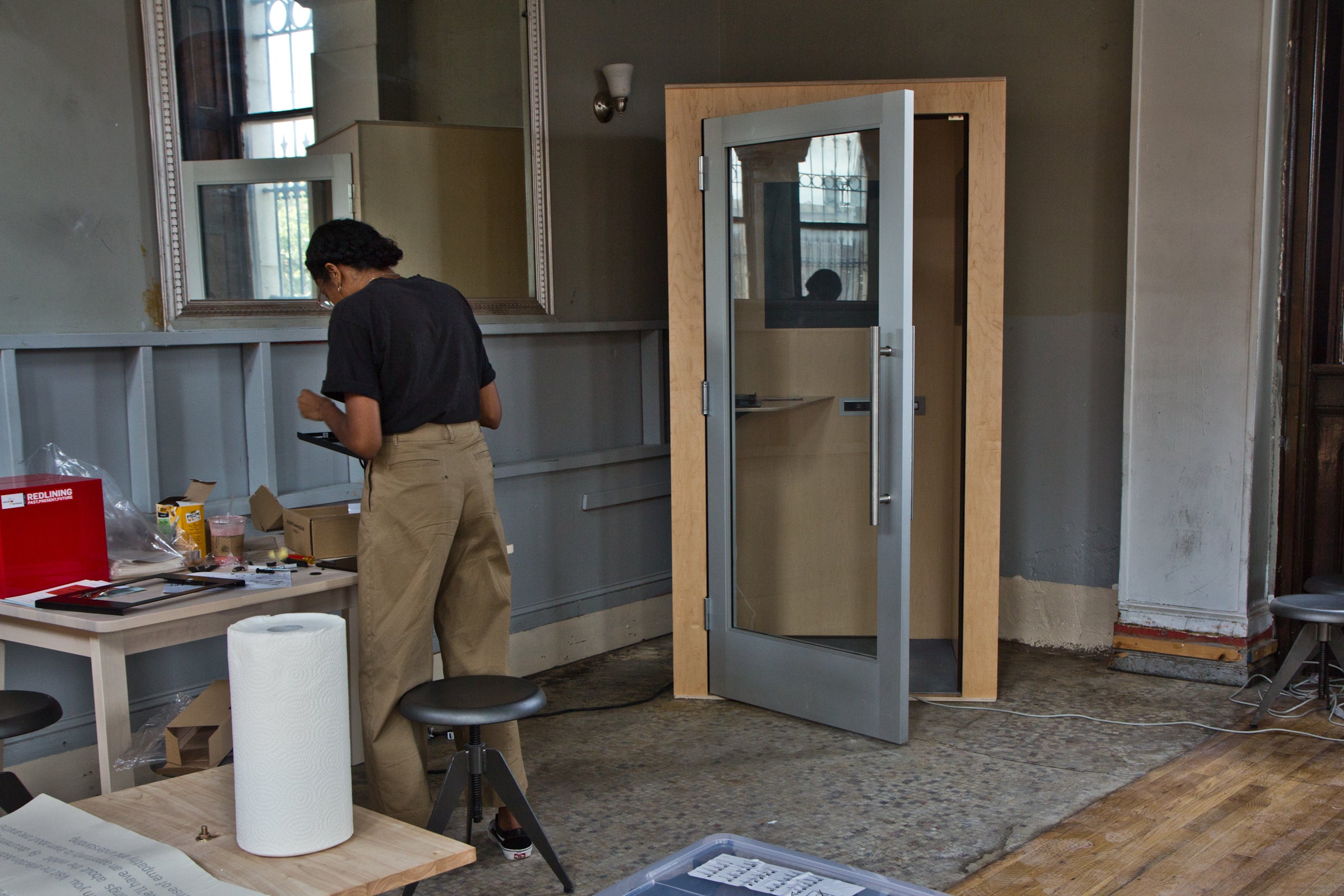
To that end, Little Giant Creative added one more element to the exhibit: a working cafe with a social-justice mission that will be open throughout the duration of the show, which runs until November 17th. The cafe will feature banh mi, Vietnamese coffee, and wifi.
Over the course of the exhibit, Little Giant will also host three public conversations, completing a series that began last fall with a kickoff discussion of redlining at WHYY.
The next panel, scheduled for Oct. 1 will feature Rachelle Faroul, a Philadelphia homeowner featured in an investigation into contemporary discriminatory mortgage lending practices and Rothstein.
WHYY is your source for fact-based, in-depth journalism and information. As a nonprofit organization, we rely on financial support from readers like you. Please give today.





